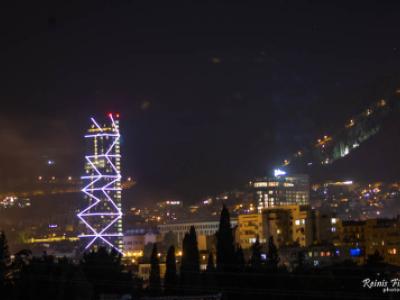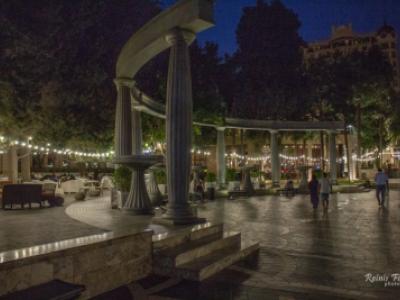The purpose of this article is to familiarize the user with the best practices regarding ISO settings for night photography. We will go over a basic introduction to ISO as well as a short guide on using different ISO values in relation to other camera settings in order to achieve best results.
One of the reasons casual photographers decide to upgrade to a DSLR camera is so they can capture quality photos during night.
However, DSLRs often require understanding of different camera settings and shooting parameters in order to achieve best possible image quality for night photography. One of these settings is called ISO.
[block:block=34]
In film photography, ISO number is an indicator of film’s sensitivity to light. Similarly, in digital photography ISO number determines light sensitivity of a digital sensor. Higher ISO levels will produce brighter images, but it will also introduce more grain (noise) into the image.
With most digital cameras, ISO can be set to Auto, meaning the camera will automatically choose what ISO settings to use. It can also be set to manual, where the user chooses the ISO value himself.
ISO settings
We have already established that higher ISO values will give you brighter images, with a downside of increasing noise levels in a digital image. So, what ISO setting should you use after the dark? Well, as a general rule, the short answer would be to use the lowest ISO value (ISO100, for example) you can while producing a photo with optimal exposure – not too bright or too dark. In practice, if you want the best results, it is not always that simple, as there are several internal and external factors to consider. First, you should ask yourself these questions:
- What type of night photography are you doing? You may be capturing cityscapes, portraits, street or starry night skies.
- Can you use a tripod? Photographing while your camera is firmly fixed on a tripod can make a huge difference in the final quality of your photo.
- Are you shooting a stationary or a moving subject?
When shooting landscapes of any type usually means your subject is far away and static, which is great news if you want to avoid noise in your images. The trick here is to use slower shutter speeds as an alternative way of getting more light into your images. As long as the shutter is open the sensor will be continuously collecting light. Set the shutter speed slow enough (such as 1s, 5s or even 20s) and you will get bright images while keeping the ISO at low levels (ISO50 – ISO400). Note that using slower shutter speeds makes the camera more sensitive to movement and vibration. For this reason, we recommend using a tripod to keep the camera stationary, or at least resting it against the floor or some other firm object. If you must shoot with your camera hand-held, it would be of great help having some type of optical image stabilization (IS) – integrated either in-lens or in-body. IS compensates for vibrations in your hands, allowing you to use slower shutters speeds (down to a point).
When shooting portraits in low light it all depends whether or not you want to use flash. Be it internal or external flash, it will provide more than sufficient lighting for you to avoid high ISO values. If you want to capture a portrait using natural lighting only, you will have to increase ISO, which will ensure your subject is sharp, but will also increase noise.
For street photography during night you probably don’t want to use artificial lighting and will have to use a faster shutter speed (something like 1/80s – 1/120s) if you want moving subjects (such as people and cars) to remain sharp. Faster shutter speed means you will have to increase ISO, but if the street is well lit than you probably won’t have to push the ISO level too high.
In case you are interesting in capturing photos of the night sky and achieving special effects such as star trails, using very slow shutter speeds and a tripod is must. In this case ISO will not be a problem and you can set it anywhere between ISO50 and ISO200.
Examples
- Using a mid-range DSLR, shooting a cityscape during night, with the camera mounted on a tripod, you might want to use the following settings: Sensor sensitivity at ISO100, shutter speed at 8s and an aperture of F/8.
- Using a high-end DSLR, shooting a stationary portrait in a well-lit street during night without flash, camera hand-held, you might want to use the following settings: Sensor sensitivity at ISO1600, shutter speed at 1/100s and an aperture of F/1.9.
- Using a mid-range point-and-shoot digital camera, shooting a photograph of a well-lit street, camera hand-held, you might want to use the following settings: Sensor sensitivity at ISO400, shutter speed at 1/32s and an aperture of F/4
Please note that these are only approximate values to give you an idea how ISO settings work in relation to other shooting parameters. These settings may not work best for real-world scenarios as there are even more factors which will impact the final result. Sensor size, quality of lens and in-camera JPEG processing algorithms all have a great effect on the quality of your photo.
It has hard to give exact values without knowing how and what you are shooting. But I will try to give some examples so you can get a general idea of ISO settings for night photography.

